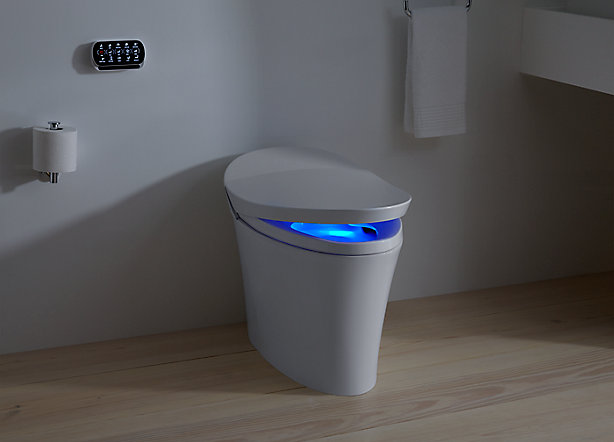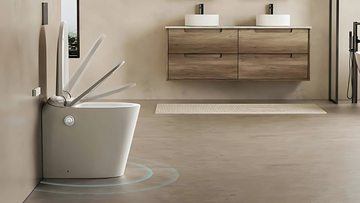As the global population ages, the need for innovative toilet solutions for the elderly is more pressing than ever. The bathroom, often overlooked, is a crucial space that can either promote independence or pose significant challenges for older adults. With the right approach and technology, it can be transformed into a sanctuary of comfort and safety. This article delves into the latest advancements and considerations for creating the perfect bathroom environment for our senior citizens.

The Growing Need for Elderly-Friendly Toilets
The world is experiencing an unprecedented demographic shift. According to the World Health Organization, the number of people aged 60 years and older will outnumber children younger than five years by 2025. This shift underscores the necessity for environments that cater to the unique needs of the elderly, especially within the home. The bathroom, a place of privacy and necessity, must evolve to meet these needs.
Traditional bathroom designs often fail to address the mobility, balance, and safety challenges faced by the elderly. Falls are a leading cause of injury among older adults, with bathrooms being one of the most common places for such accidents. Thus, integrating innovative toilet solutions for elderly becomes not just a matter of convenience, but of safety and dignity.
Smart Toilets: A Game Changer in Elderly Care
Smart toilets are at the forefront of bathroom innovation, offering features that enhance comfort, hygiene, and safety. These toilets often include automatic flushing, bidet functions, heated seats, and even health monitoring capabilities. For instance, some smart toilets can analyze urine and stool, providing valuable health data that can be shared with healthcare providers.
Moreover, the integration of voice-activated controls and remote operation capabilities allows seniors with limited mobility to operate the toilet with ease. As explored in this article, smart toilets represent a significant leap forward in creating a more accessible and supportive environment for the elderly.
Design Considerations for Elderly-Friendly Bathrooms
Beyond smart toilets, the overall design of the bathroom plays a crucial role in ensuring safety and comfort. Key considerations include:
Non-Slip Surfaces
Installing non-slip tiles and mats can greatly reduce the risk of falls. These materials provide excellent grip, even when wet, making them an essential component of any elderly-friendly bathroom.
Grab Bars and Handrails
Strategically placed grab bars and handrails offer support and stability. They are particularly important near the toilet and shower areas, where the risk of slipping is highest.
Adjustable Fixtures
Adjustable-height toilets and sinks cater to users of varying heights and mobility levels. They provide flexibility and ease of use, allowing seniors to maintain independence in their daily routines.
Technological Advancements in Toilet Solutions
The rapid advancement of technology has led to the development of many innovative toilet solutions for elderly. These include automatic flushing systems, self-cleaning features, and toilets with integrated lighting to aid night-time navigation. Such features are designed to enhance usability and hygiene, contributing to a safer and more pleasant bathroom experience.
Furthermore, the integration of IoT (Internet of Things) technology allows for real-time monitoring and alerts. For example, if a senior has not used the toilet for an extended period, alerts can be sent to caregivers or family members. This technology is detailed in articles like this one, highlighting the potential for technology to transform elderly care.
The Role of Innovations in Promoting Independence
Independence is a critical aspect of dignity for the elderly. By incorporating innovative toilet solutions for elderly, we can empower seniors to maintain their independence for longer. Features like remote operation and health monitoring not only provide convenience but also peace of mind for both the user and their loved ones.
For a deeper understanding of how these innovations are shaping the future, check out this insightful resource.
Conclusion: Moving Forward with Compassion and Technology
The integration of innovative toilet solutions for elderly is more than just a trend; it is a necessity that addresses the growing needs of our aging population. By embracing these advancements, we not only enhance the quality of life for seniors but also pave the way for a future where everyone can enjoy safety, comfort, and dignity in their homes.
For additional insights into the latest trends and technologies in toilet solutions, visit this page.

FAQs
What are the key features of smart toilets for the elderly?
Smart toilets often include features such as automatic flushing, bidet functions, heated seats, and health monitoring capabilities. These features enhance convenience and hygiene, making them ideal for elderly users.
How can bathroom design improve safety for seniors?
Bathroom safety can be significantly improved with the installation of non-slip surfaces, grab bars, and adjustable fixtures. These elements provide stability and ease of use, reducing the risk of falls.
Why is technology important in elderly care?
Technology provides tools that enhance safety, promote independence, and offer health monitoring. By integrating these technologies into daily life, we can improve the overall well-being of the elderly population.
This article contains affiliate links. We may earn a commission at no extra cost to you.






